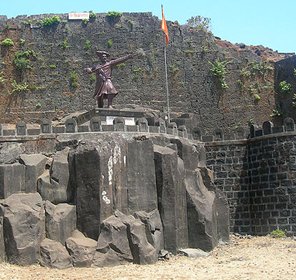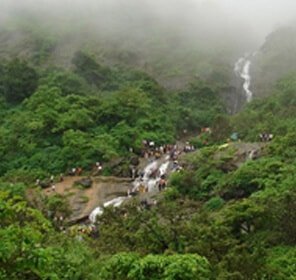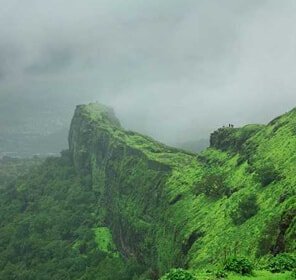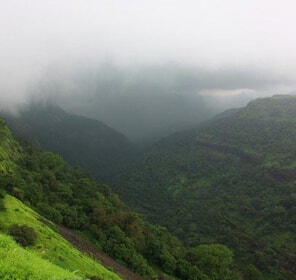The history of Panhala is also the history of Marathas. Situated at a magnificent height of 3177 feet above sea level, Panhala commands a panoramic and awesome view of the valley. There are innumerable places of interest , each with its share of haunting anecdotes. Sajja Kothi, where Sambhaji was imprisoned. Ambabai Temple, where Shivaji used to seek blessings before venturing on expeditions. Pavankhind, where Baji Prabhu laid down his life to cover Shivaji's escape.
Panhala is redolent with memories of Shivaji. Not surprising, though, considering that barring his capitals at Rajgad and later Raigad, and Shivneri, where he spent his childhood, Panhala is the only fort where Shivaji spent more than 500 days. It was Maratha State capital until 1782 and in 1827 it went to the British.Besides, there's the Sambhaji temple Someshwar temple, Teen Darwaza, Raj Dindi
This imposing fort, 20km northwest of Kolhapur, is built on an outlying spur of the Sahyadris, rising more than 400m above plain. The strategic importance of Panhala, guarding one of the principal routes through the Western Ghat, can be judged from its long and varied history. After serving as the headquarter of the Shilahara ruler Bhoja II (1178-1209), the site subsequently passed into hands of Yadavas. It was favorite outpost of the Bahamanis of Bidar ; Mahmud Gawan, the powerful Prime Minister, encamped here during the rainy season of 1469.
By the beginning of the 16c Panhala was absorbed into the kingdom of Bijapur.The Adil Shahis were responsible for strengthening and rebuilding the ramparts and Gateways.The fort was raided by Shivaji in 1659, but it was not until 1673 that he was able to occupy it permanently.
In 1701 Panhala surrendered to Auragzeb, and it was here that the Mughal Emperor recieved the English Ambassador, Sir WilliamNorris. Within a few months the fort was retaken by the the Maratha forces under Pant Amatya Ramachandra, who asserted his autonomy by founding an independent dynasty.In1782 these rulers shifted their headquarters to Kolhapur. After a local rebellion in 1844, Panhala was taken by the British. More than 7km of Fortifications define the approximently triangular zone of Panhala fort. The walls are protected for long sections by steep escarpments, reinforced by a parapet with slit holes. The remaining sections have 5-9m high ramparts, strengthened by round bastions. Unfortunately, the East Gate called Char Darawaja, through which the road passes on arrival at fort, was demolished by the British.








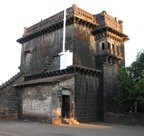


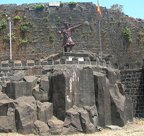





 Hill Stations in Uttarakhand
Hill Stations in Uttarakhand Hill Stations in Tamilnadu
Hill Stations in Tamilnadu Hill Stations in Maharashtra
Hill Stations in Maharashtra Hill Stations in Gujarat
Hill Stations in Gujarat Hill Stations in Sikkim
Hill Stations in Sikkim  Hill Stations in Arunachal Pradesh
Hill Stations in Arunachal Pradesh Hill Stations in Himachal Pradesh
Hill Stations in Himachal Pradesh Hill Stations in Andhra Pradesh
Hill Stations in Andhra Pradesh  Hill Stations in Karnataka
Hill Stations in Karnataka Hill Stations in Jammu Kashmir
Hill Stations in Jammu Kashmir  Hill Stations in West Bengal
Hill Stations in West Bengal  Hill Stations in Rajasthan
Hill Stations in Rajasthan Hill Stations in Telangana
Hill Stations in Telangana  Hill Stations in Kerala
Hill Stations in Kerala Hill Stations in Madhya Pradesh
Hill Stations in Madhya Pradesh  Hill Stations in Meghalaya
Hill Stations in Meghalaya 